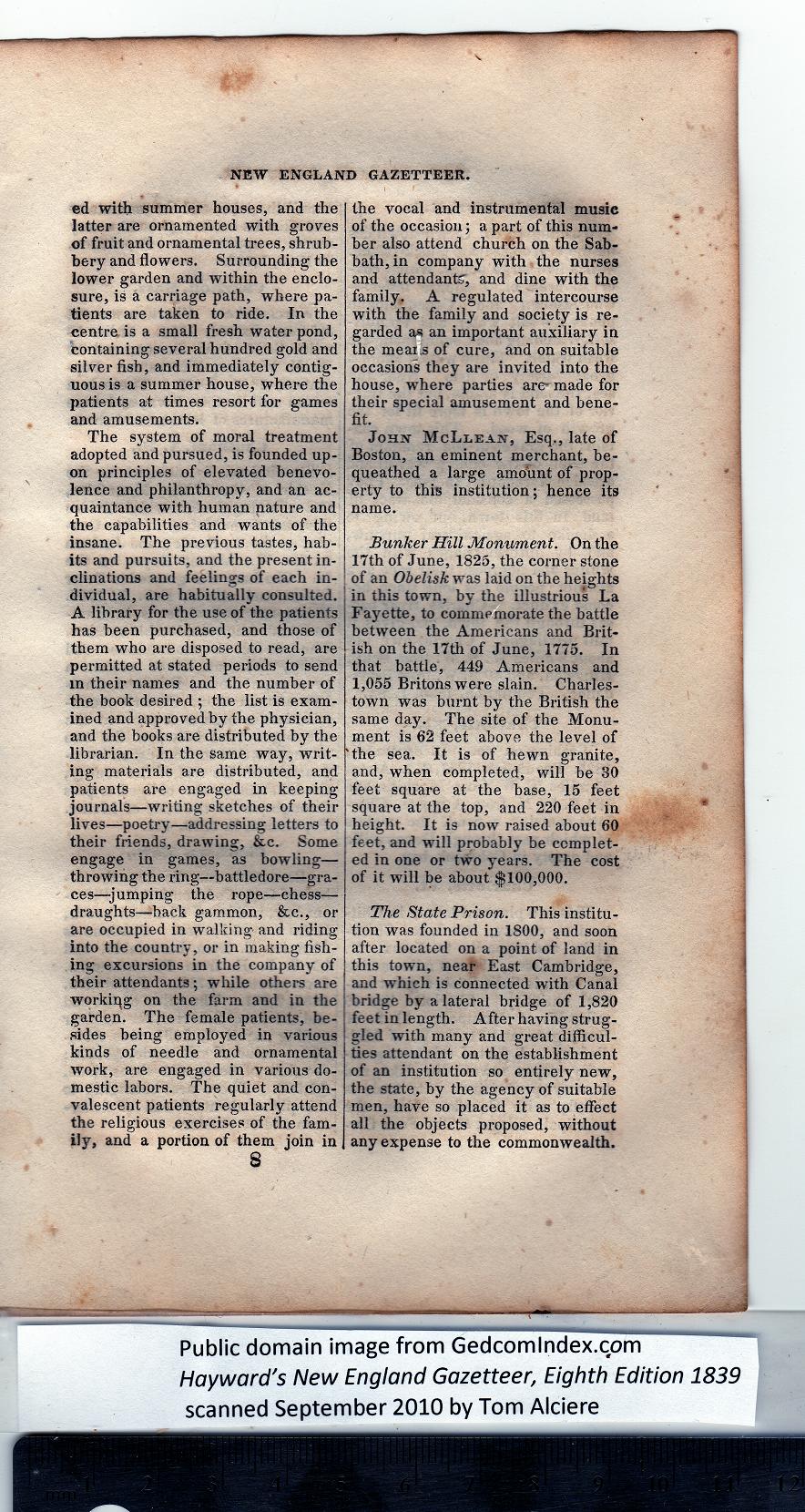|
NEW ENGLAND GAZETTEER.
ed with summer houses, and the
latter are ornamented with groves
of fruit and ornamental trees, shrub-
bery and flowers. Surrounding the
lower garden and within the enclo-
sure, is a carriage path, where pa-
tients are taken to ride. In the
centre is a small fresh water pond,
containing several hundred gold and
silver fish, and immediately contig-
uous is a summer house, where the
patients at times resort for games
and amusements.
The system of moral treatment
adopted and pursued, is founded up-
on principles of elevated benevo-
lence and philanthropy, and an ac-
quaintance with human nature and
the capabilities and wants of the
insane. The previous tastes, hab-
its and pursuits, and the present in-
clinations and feelings of each in-
dividual, are habitually consulted.
A library for the use of the patients
has been purchased, and those of
them who are disposed to read, are
permitted at stated periods to send
m their names and the number of
the book desired ; the list is exam-
ined and approved by the physician,
and the books are distributed by the
librarian. In the same way, writ-
ing materials are distributed, and
patients are engaged in keeping
journals—writing sketches of their
lives—poetry—addressing letters to
their friends, drawing, &e. Some
engage in games, as bowling—
throwing the ring—battledore—gra-
ces—-jumping the rope—chess—
draughts—hack gammon, &c., or
are occupied in walking and riding
into the country, or in making fish-
ing excursions in the company of
their attendants; while others are
workiqg on the farm and in the
garden. The female patients, be-
sides being employed in various !
kinds of needle and ornamental
work, are engaged in various do-
mestic labors. The quiet and con-
valescent patients regularly attend
the religious exercises of the fam-
ily, and a portion of them join in
8
the vocal and instrumental music
of the occasion; a part of this num-
ber also attend church on the Sab-
bath, in company with the nurses
and attendants, and dine with the
family. A regulated intercourse
with the family and society is re-
garded as an important auxiliary in
the meais of cure, and on suitable
occasions they are invited into the
house, where parties are* made for
their special amusement and bene-
fit.
John- McLleajnt, Esq., late of
Boston, an eminent merchant, be-
queathed a large amount of prop-
erty to this institution; hence its
name.
Bunker Hill Monument. On the
17th of June, 1825, the corner stone
of an Obelisk was laid on the heights
j in this town, by the illustrious La
Fayette, to commemorate the battle
between the Americans and Brit-
ish on the 17th of June, 1775. In
that battle, 449 Americans and
1,055 Britons were slain. Charles-
town was burnt by the British the
same day. The site of the Monu-
ment is 62 feet above the level of
'the sea. It is of hewn granite,
and, when completed, will be 30
feet square at the base, 15 feet
square at the top, and 220 feet in
height. It is now raised about 60
feet, and will probably be complet-
ed in one or two years. The cost
of it will be about $100,000.
The State Prison. This institu-
tion was founded in 1800, and soon
after located on a point of land in
this town, near East Cambridge,
and which is connected with Canal
bridge by a lateral bridge of 1,820
feet in length. After having strug-
i gled with many and great difficul-
ties attendant on the establishment
of an institution so entirely new,
the state, by the agency of suitable
men, have so placed it as to effect
all the objects proposed, without
any expense to the commonwealth.
— . ■, . . .:..d
PREVIOUS PAGE ... NEXT PAGE
This page was written in HTML using a program written in Python 3.2 and image-to-HTML text generated by ABBYY FineReader 11, Professional Edition.
|
